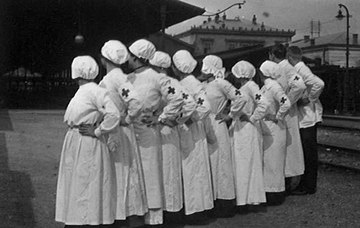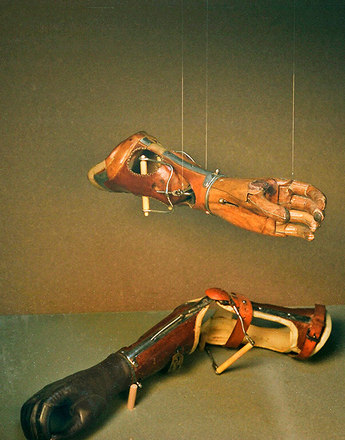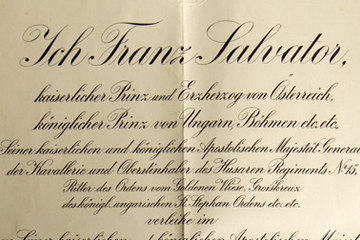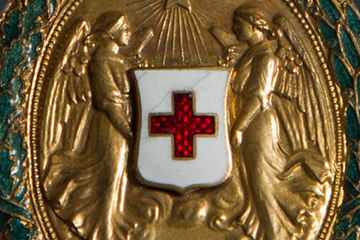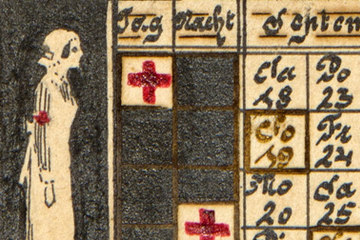-

Poster for a benefit event for invalids, 1915
Copyright: Heeresgeschichtliches Museum, Wien
Partner: Heeresgeschichtliches Museum -
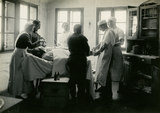
Red Cross nurses during an operation in a field hospital, photo
Copyright: Heeresgeschichtliches Museum, Wien
Partner: Heeresgeschichtliches Museum -
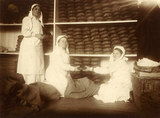
Red Cross nurses handing out food at Vienna Ostbahnhof, photo, c. 1915
Copyright: Sammlung Frauennachlässe, Institut für Geschichte der Universität Wien
Partner: Sammlung Frauennachlässe, Institut für Geschichte der Universität Wien -
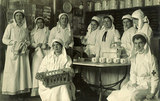
Red Cross nurses handing out food at Vienna Ostbahnhof, photo, c. 1915
Copyright: Sammlung Frauennachlässe, Institut für Geschichte der Universität Wien
Partner: Sammlung Frauennachlässe, Institut für Geschichte der Universität Wien
The notion of war as a specifically male activity was long ago dispelled by women’s and gender history. During the First World War, women were not only active in the war effort at home; they also served on the front as female auxiliaries and Rot-Kreuz-Schwestern [Red Cross nurses].
Immediately after the start of the war, the Red Cross handed over its team of trained nurses to the military. Given the anticipated lack of available nursing personnel, as early as August 1914, the Red Cross called for all women to apply to work as war nurses. In the period until the end of the war, it is estimated that over 25,000 nurses, auxiliary nurses and care assistants were deployed. They worked either unpaid or for a pittance in field hospitals near the front, often in life-threatening conditions.
Initially, women from all walks of life signed up to become war nurses, but with the progress of the war and given the supply shortages at home, many women found themselves no longer able to work as war nurses because of the terrible wages. Voluntary work was, then, left to the financially better-off women from the nobility and bourgeois circles.
The main duties of the nurses included caring for wounded soldiers, as well as looking after the sick in the epidemic control hospitals and psychiatric wards. Responsibility for managing the surgical dressing materials and running the military hospital also fell to them. The nurses were officially attached to the army health service and thus assigned their own field of duty in the military.
The willingness of the war nurses to volunteer was seen a feminine complement to compulsory military service for men. Care work, according to the conservative argument of the Red Cross, gave ‘the female soul, the driving force in a woman’s life, what [...] it needs: the opportunity to care, love and give.’ The nurse became an ideal of self-sacrifice and care. She embodied the selfless and loving mother, as well as the religious, asexual nursing sister. Aware of her duty, she served the Fatherland alongside the soldiers and was rewarded with great recognition.
Though she worked directly in the military and had therefore entered a domain classified as genuinely male, unlike the women auxiliaries, she did not challenge the notion of the ‘feminine motherland’ and ‘masculine front’. Ultimately, she was doing what was supposedly ‘women’s work’, caring for and treating wounded soldiers so that they could return to battle.
Rumours of affairs between nurses and soldiers threatened the image of the self-sacrificing and caring nurse. They confirmed the accusations of some critics that the nurses had not taken up their role out of a sense of duty or selflessness, but in order to find a lover or potential husband.
Yet while female soldiers or female auxiliaries working in the army were largely forgotten after the end of the war, the war nurses became an integral part of the collective memory of the First World War.
Translation: Aimee Linekar
Bauer, Ingrid: Frauen im Krieg. Patriotismus, Hunger, Protest – weibliche Lebenszusammenhänge zwischen 1914 und 1918, in: Mazohl-Wallnig, Brigitte (Hg.): Die andere Geschichte 1. Eine Salzburger Frauengeschichte von der ersten Mädchenschule (1695) bis zum Frauenwahlrecht (1918), Salzburg 1995, 285-310
Heeresgeschichtliches Museum: Die Frau im Krieg. Katalog zur Ausstellung vom 6. Mai bis 26. Oktober 1986, Wien 1986
Panke-Kochinke, Birgit/Schaidhammer-Placke, Monika: Frontschwestern und Friedensengel. Kriegskrankenpflege im Ersten und Zweiten Weltkrieg. Ein Quellen- und Fotoband, Frankfurt am Main 2002
Schönberger, Bianca: Mütterliche Heldinnen und abenteuerlustige Mädchen. Rotkreuz-Schwestern und Etappenhelferinnen im Ersten Weltkrieg, in: Hagemann, Karen/Schüler-Springorum, Stefanie (Hrsg.): Heimat – Front. Militär und Geschlechterverhältnisse im Zeitalter der Weltkriege, Frankfurt/New York 2002, 108-127
Quotes:
‘Inflicting Wounds, Healing Wounds …“: Beginn eines den Kriegskrankenschwestern gewidmeten Gedichts, quoted from: Bauer, Ingrid: Frauen im Krieg. Patriotismus, Hunger, Protest – weibliche Lebenszusammenhänge zwischen 1914 und 1918, in: Mazohl-Wallnig, Brigitte (Hg.): Die andere Geschichte 1. Eine Salzburger Frauengeschichte von der ersten Mädchenschule (1695) bis zum Frauenwahlrecht (1918), Salzburg 1995, 292 (Translation)
"the female soul, the driving force ...“: von Zimmermann, Anna: Was heißt Schwester sein? Beiträge zur ethischen Berufserziehung, 2. Auflage, Leipzig 1912, 15, quoted from: Schönberger, Bianca: Mütterliche Heldinnen und abenteuerlustige Mädchen. Rotkreuz-Schwestern und Etappenhelferinnen im Ersten Weltkrieg, in: Hagemann, Karen/Schüler-Springorum, Stefanie (Hrsg.): Heimat – Front. Militär und Geschlechterverhältnisse im Zeitalter der Weltkriege, Frankfurt/New York 2002, 109 (Translation)

